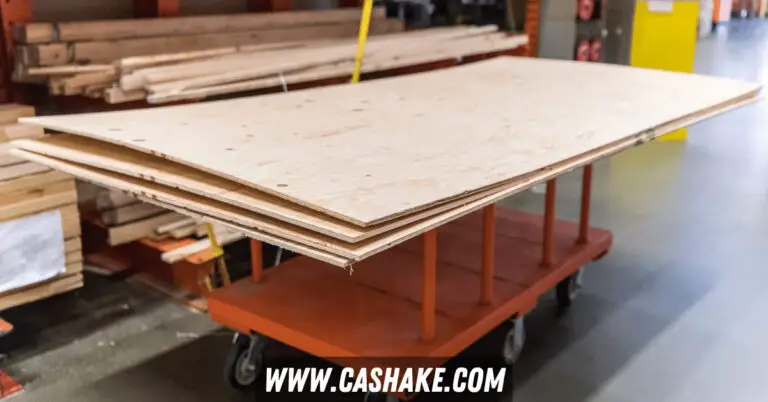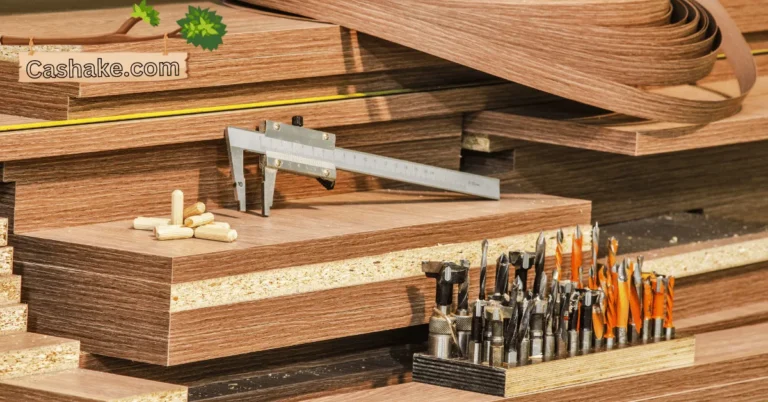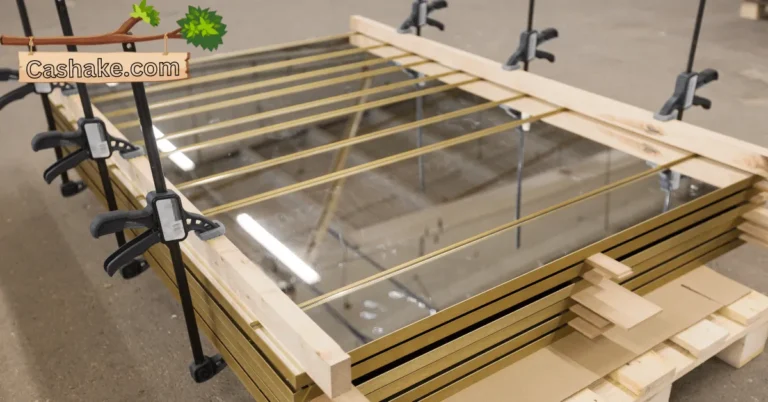Alright, folks, let’s tackle a common question: Can you give plywood a good plane ride? Well, the short answer is yes, but there’s a bit more to it than that.
In this article, we’re diving into the nitty-gritty of planing plywood. We’ll spill the beans on its ups and downs and show you the ropes on how to do it right. Plus, we’ll throw in some other tricks like sanding and routing for good measure.
Whether you’re a woodworking newbie or a seasoned pro, stick around and get the lowdown on all things plywood planing.
Key Takeaways
- Plywood is made of multiple layers of wood glued together.
- Planing plywood can be a good way to flatten the surface and remove any imperfections.
- However, it is important to be careful not to plane too much, or you could damage the veneer.
- There are two main types of planners that can be used for plywood: a hand plane and a power planer.
- Hand planes are more precise and safer, but they are slower than power planers.
- Power planers are faster, but they can be more dangerous if not used properly.
- When planing plywood, it is important to plane in the direction of the grain.
- It is also important to make multiple passes, rather than trying to plane too much material in one pass.
- If you are planning to use the plywood for a structural application, you may want to avoid planing it too much, as this could weaken the material.
- The best method for planing plywood will depend on the size of the area you need to plane, the type of finish you want, and your own personal preferences.
Can you plane plywood? (More Detailed Explanation)
Sure thing, you can give plywood a shave with a plane, but here’s the lowdown. Plywood’s like a sandwich, lots of wood layers glued up with resin. When you plane it, you’re basically peeling off the top layer of the wood sandwich.
It can help smooth things out and get rid of any bumps, but be careful, ’cause you might mess up that top layer.
If you’re gonna go for it, make sure your blades are sharp and take your sweet time. And always follow the wood’s flow – plane in the direction of the grain, or you might tear things up. If you’re using a power planer, don’t go too deep, keep it at about 1/8 inch per pass.
But you know what? Planing should be the last option on your list. If the plywood’s not perfectly flat, maybe consider giving it a sanding or using a router to get those edges in line.

But hey, if you find yourself in a plywood planing pickle, just remember to take it slow and easy to keep that veneer in one piece.
Here are some of the pros and cons of planing plywood:
Pros
- Can flatten the surface and remove imperfections.
- Can create a smooth, even finish.
- Can be used to reduce the thickness of plywood.
Cons
- Can damage the veneer and cause it to delaminate.
- Can be time-consuming and labor-intensive.
- Requires sharp blades and careful technique.
Thinking about giving plywood a little plane action? Well, here’s the deal: weigh the pros and cons. If you’re feeling all confident and sure-handed about not wrecking that veneer, go for it. You’ll end up with a sleek finish.
But, if you’re in doubt, maybe skip the plane ride and consider something safer, like sanding or routing. No need for unnecessary risks, right?
Read More: Can you plane Plywood Subfloor?
What is inside of Plywood?
Alright, let’s break down plywood in a nutshell: It’s like the Frankenstein of wood, made by gluing loads of super-thin wood layers together with some resin glue.
These layers are usually paper-thin, around 1/16 of an inch, and they’re stacked up with the grains crisscrossing each other. That’s the secret sauce that gives plywood its strength and keeps it from going wobbly.
Now, the number of layers depends on how thick the plywood is. A half-inch thick one will have around 5 layers, while a three-quarter-inch beast will rock about 7.
And here’s a fun fact: the type of wood used for these layers changes depending on where the plywood’s gonna live.
Exterior stuff gets dressed up in fancy hardwood like maple or birch, while the indoor crew might be chillin’ in something like pine or fir.
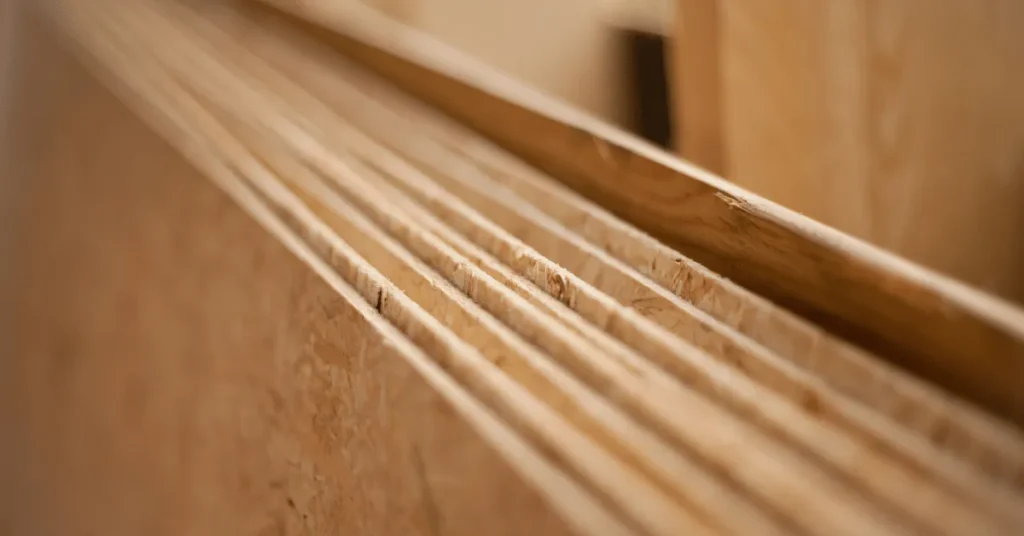
People love plywood for all sorts of things – furniture, cabinets, and even flooring. It’s not just a pretty face; it’s also the go-to for structural stuff like sheathing and subflooring.
Some benefits:
- Strong and stable
- Versatile
- Durable
- Cost-effective
Here are some of the drawbacks of plywood:
- Can be difficult to work with
- Not as strong as solid wood
- Can delaminate if not properly cared for
So, when it comes to plywood, it’s a bit of an all-rounder. Strong, sturdy, and can tackle all sorts of jobs. But, before you dive in, remember, there are a few quirks to be aware of.
What happen when you plane plywood?
So, here’s the deal: when you take a plane to plywood, you’re basically giving it a little makeover by shaving off the top layer. It can make things nice and flat, but you gotta watch out, ’cause it can also throw a wrench in the plywood’s plans.
Here are some things that happen when you plane plywood:
- The top layer of wood is shaved off.
- The grain of the wood is revealed.
- The glue that holds the layers together may be exposed.
- The plywood may become weaker.
- The plywood may become more likely to warp or crack.
Now, if you’re thinking of giving plywood a shave, here’s the lowdown: be gentle. Grab those sharp blades and stick with the grain’s flow. Plane it like you mean it, but don’t go overboard, or you might end up with some fragile plywood that’s prone to snapping.
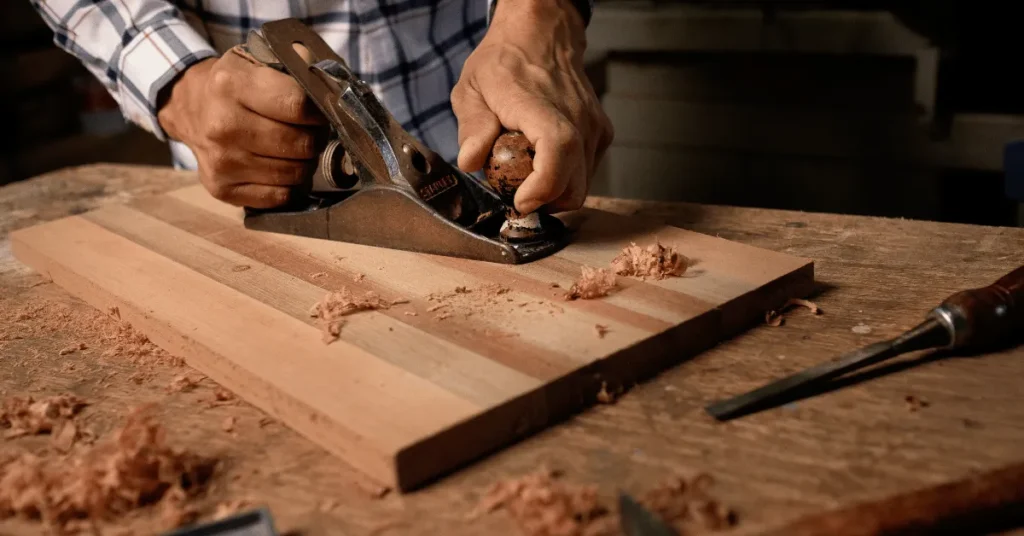
Here’s a pro tip: save planing for your plywood as a last-ditch effort. If it’s not playing nice and staying flat, consider giving it a sanding or maybe even a router job to straighten those edges. Easy does it!
Which planner will plane better the plywood?
Alright, let’s dive into the world of planing plywood. We’ve got two heavy hitters in the ring: the hand plane and the power planer. They each bring their A-game, but there’s a catch.
Hand planes are like the precision surgeons of the woodworking world. Perfect for those smaller jobs and finishing touches. But here’s the kicker: they’re a tad slow and can be a real test of your woodworking skills. One wrong move, and your plywood’s in trouble.
Now, power planers, on the other hand, are like the muscle cars. They eat through big projects and rough jobs like nobody’s business. But hold on to your hats, ’cause they can be a bit rowdy and kick up a storm of sawdust.
So, which one’s the champ for planing plywood? Well, that’s the million-dollar question, my friend. It all depends on your project and how steady your hand is. Choose wisely!

Here’s the deal: If you’re tinkering with a tiny project and crave that pinpoint perfection, the trusty hand plane is your buddy.
But, if you’ve got a big honkin’ project and need to blitz through plywood like there’s no tomorrow, the power planer’s the way to roll.
Now, don’t sweat it too much. Best way to figure out your groove? Give ’em both a whirl and see which one tickles your fancy. Experiment away!
How to reduce the thickness of plywood?
Alright, say you’ve got some plywood that’s a bit too beefy for your liking. No biggie, here’s the skinny on slimming it down:
- Measure it up: First things first, figure out just how thick that plywood is. That way, you’ll know how much you need to shed.
- Grab the right tool: Time to pick your weapon. You’ve got options – a trusty hand plane, a power planer, or a router can all get the job done.
- Set the depth: The depth of cut is your magic number. It decides how much plywood gets the boot with each pass.
- Go with the grain: Plywood likes it when you follow its lead. Plane it in the direction of the grain to keep it happy and delamination-free.
- Take it easy: Don’t go all gung-ho and try to strip it all off in one go. Make several passes to avoid plywood tantrums.
- Check your work: After each pass, give it a once-over to make sure you’re not going overboard. Easy peasy!
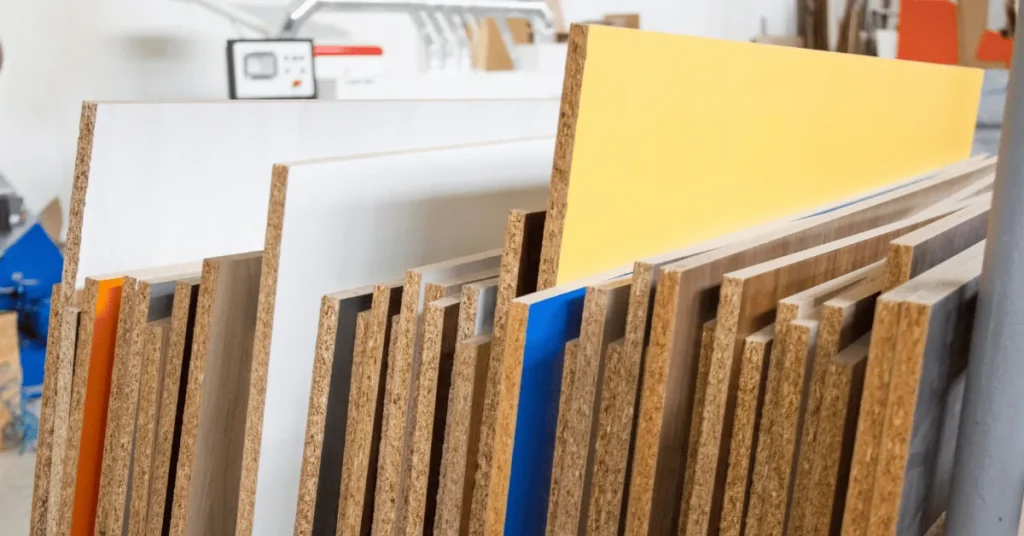
Some additional tips for reducing the thickness of plywood:
- Use sharp blades.
- Use a dust collection system to keep the work area clean.
- Be careful not to plane too much, or you could weaken the plywood.
So, just follow these steps, and you can slim down that plywood without giving it a hard time. Easy-peasy!
Some tools and techniques that you can use to reduce the thickness of plywood:
- A sanding block can be used to sand down the plywood in a controlled manner.
- A router can be used to create a smooth, even finish.
- A table saw can be used to cut the plywood to the desired thickness.
Picking the right tool and technique is key, folks. But if you’re feeling a bit lost in the plywood-thinning game, no shame in reaching out to a seasoned wood pro for some guidance.
Can you use a block plane on plywood?
Alright, quick answer: Yup, you can definitely take a block plane to plywood. But, there’s a bit more to the story.
Advantages of using a block plane on plywood:
Check it out, block planes are like the pocket knives of the woodworking world. They’re small, handy, and perfect for tinkering with those pint-sized plywood projects.
But don’t let their size fool you. These bad boys can do it all – from giving edges a makeover to making surfaces as smooth as butter.
Plus, they won’t break the bank, so they’re a win for those of us watching the pennies.
Disadvantages of using a block plane on plywood:
- Block planes can be difficult to use on large plywood panels.
- Block planes can damage the plywood if not used carefully.
- Block planes can be slow to use, especially on thick plywood panels.
Here’s the lowdown, my friend: The whole block plane and plywood thing? It’s a “depends on the mood” kind of deal. If you’re diving into a petite plywood project and craving that laser-precise finish, a block plane could be your go-to move.
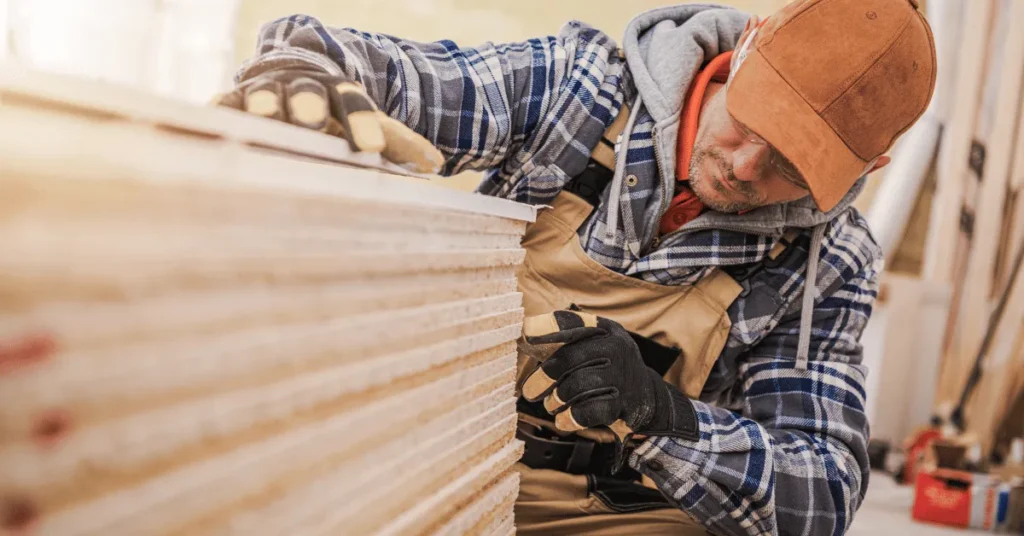
But, if you’re tackling a big ol’ plywood panel or racing against the clock to plane a bunch of it, the power planer steps into the spotlight.
Can you use a file on plywood?
Sure thing, you can give a file a whirl on plywood, but let’s talk shop. Files are kind of like the slow and steady folks in the woodworking world. They’re all about tiny material removal and can take their sweet time.
Now, if you’ve got a whole lotta plywood to smooth out, consider calling in the big guns – a power planer or a router. They’ll zip through it in no time.
But don’t count files out completely. They’re your go-to for fixing up those little plywood imperfections – think dents and scratches.
They can even jazz up edges or add a fancy finish. Just remember, go for a file with a coarse grit, keep those blades sharp, and always file with the grain. We wouldn’t want any plywood tantrums!
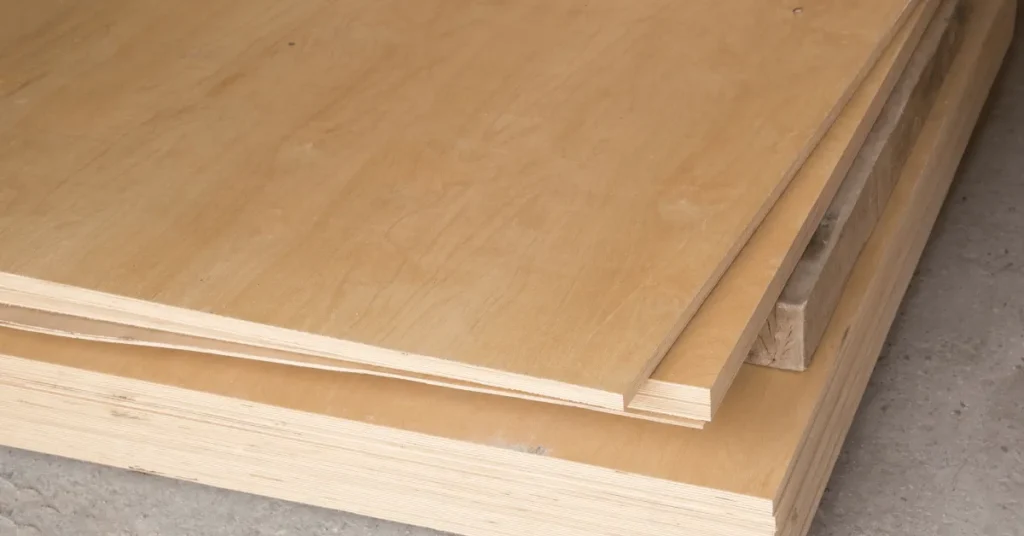
All in all, files aren’t the plywood-smoothing superheroes you’d hope for. But hey, they’re not completely useless. Keep ’em around for those mini missions like erasing imperfections or adding a touch of pizzazz.
Tips for using a file on plywood:
- Use a coarse grit file.
- File in the direction of the grain.
- Be careful not to apply too much pressure.
- File off any burrs that are created.
So, stick to these tricks, and you’ll be wielding that file on plywood like a pro without leaving a mark. Easy-peasy!
Can You Round the Edge of Plywood with a Router?
Alright, quick answer: You betcha, you can give plywood edges a rounded touch-up with a router. But, let’s chat about the nitty-gritty, shall we?
Pros of rounding the edge of plywood with a router:
No doubt about it, using a router is like taking the express lane to that sleek, rounded plywood edge. Plus, it’s your ticket to crafting all sorts of cool profiles – think chamfers, ogees, and even some smooth curves.
And here’s a bonus: routers are the friendly neighborhood superheroes of plywood work. They’re less likely to wreck the place compared to some other rowdy tools, like saws.
Cons of rounding the edge of plywood with a router:
Here’s the lowdown: you’ll need a router and a router bit, which can dig into your wallet a bit.
Getting that edge as smooth as butter? Well, it can be a bit of a challenge, especially if you’re not a seasoned router pro.
And hey, watch out! If you’re not careful, that plywood might not come out unscathed, especially if you’re wielding a razor-sharp router bit.
Here’s the deal: Should you round that plywood edge with a router? Well, it all boils down to your project and what floats your boat. If you’re looking for a fast and easy way to get that smooth, rounded edge, then a router’s your buddy.
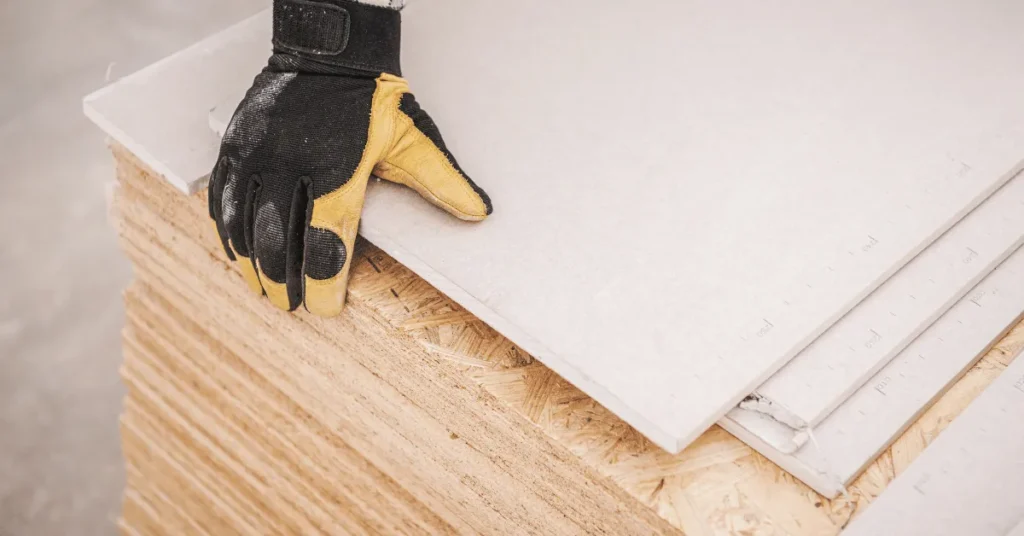
But hey, if you’re watching those purse strings or you’re not exactly a router pro, fear not. There are other tricks up your sleeve, like reaching for a trusty file or a good ol’ sanding block.
What things you should consider while planning the plywood?
Thinking about giving that plywood a good old planing session? Well, it’s a nifty way to get that surface nice and flat while bidding imperfections goodbye. But before you dive in, let’s chew on a few things to keep in mind.
Things you should consider:
So, you’re thinking about giving that plywood a good old planing treatment. Well, before you roll up your sleeves, here are a few nuggets to ponder:
- Plywood Personality: Not all plywood is created equal. Some are made with tougher woods, which can put up a fight when you’re planing. If you’re going head-to-head with hard plywood, consider wielding a sharp blade and taking it slow.
- Thickness Matters: Plywood thickness plays a role too. The thicker it is, the more muscle you’ll need. For those beefy plywood pieces, a power planer might be your trusty sidekick.
- Go with the Grain: Keep your planing in line with the grain direction. This keeps the plywood from throwing a delamination tantrum.
- Finishing Touch: If you’re aiming for that silky-smooth finish, don’t skimp on grit. Go finer for that polished look.
With these tips in your toolbox, you can breeze through planing plywood like a pro, no damage included.
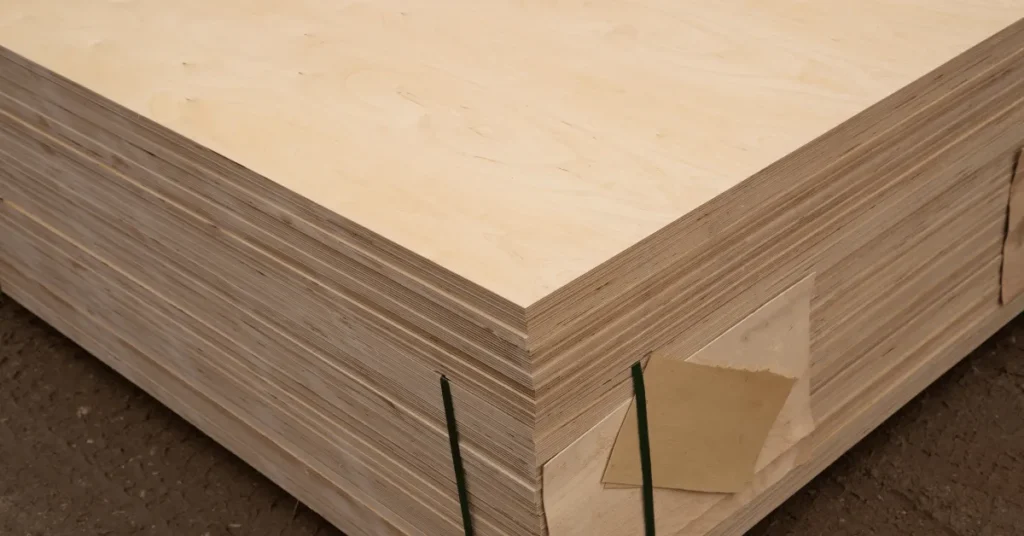
When it comes to plywood, it all boils down to what you’re using it for. If you’re going for a structural gig, don’t go overboard with the planing – too much of it can make the plywood less sturdy.
But if you’ve got dreams of slapping on a fresh coat of paint or stain, then rough it up a bit with a coarser grit. Trust me, it’ll make that finish stick like glue.
And hey, it’s your show – some folks dig that smooth plywood vibe, while others lean towards the rugged, rustic charm. So, go ahead and play around with different grits ’til you find your groove.
Which is better hand planning or power planning the plywood?
First let’s understand the differences between these two.
What is hand planning?
So, here’s the deal: hand planing is all about using that trusty hand plane to work some magic on your plywood. It might not be the fastest thing in the world, but let me tell you, it’s the secret sauce to getting that ultra-smooth finish.
What is power planning?
Alright, check it out – power planning is like the cool cousin of hand planning. You’ve got this nifty power planer doing the heavy lifting to flatten and smoothen that plywood surface.
It’s speedy, no doubt, but keep in mind, it can get a bit wild and leave you with a rougher finish if you’re not careful.
When is hand planning better?
If you’re aiming for that super-smooth vibe, hand planning’s the way to roll. Plus, it’s your go-to move when you’re tackling a pint-sized piece of plywood.
When is power planning better?
So, here’s the deal: when you’ve got a big chunk of plywood to flatten in a hurry, power planning is your go-to move. It’s also the boss choice when you’re dealing with plywood that’s got some serious hardwood action going on.
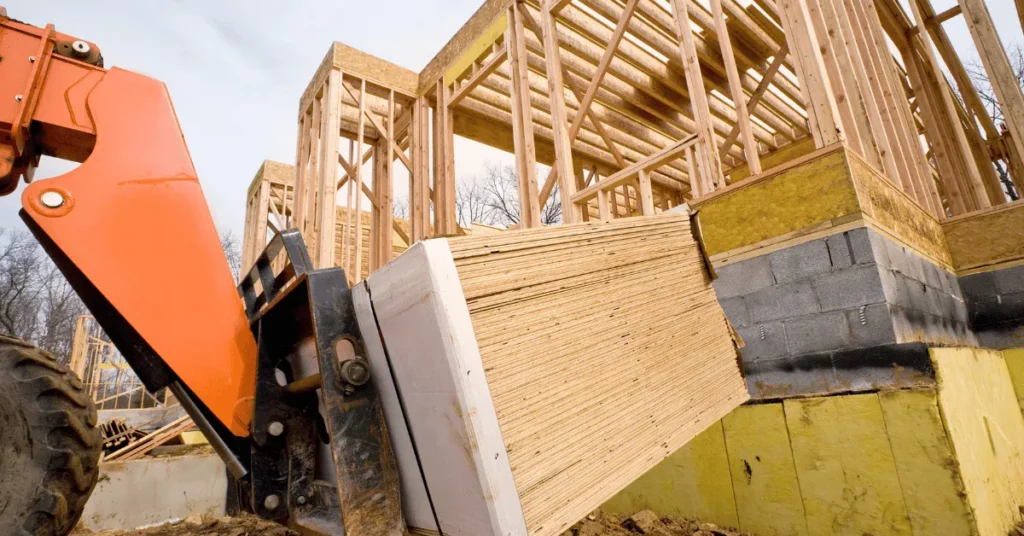
Here is a table that summarizes the pros and cons of each method:
| Method | Pros | Cons |
|---|---|---|
| Hand planning | Produces a very smooth finish, Can be used on small areas, More precise, Safer, Requires more skill | Slow, Time-consuming |
| Power planning | Faster, Can be used on large areas, Less skill required | Rougher finish, Can be dangerous, Requires more dust collection |
At the end of the day, it all comes down to what floats your boat and what your project’s calling for. If you’re all about that super-smooth finish, go old-school with some hand planning.
But when you’ve got a big plywood canvas to flatten in a flash, power planning’s your ticket. Your call, buddy!
How to choose the right method for your project:
Alright, let’s break it down in a chill way:
Think about how big your plane job is. Small task? Hand planning’s your pal. Got a massive area to tackle? Power planning’s got your back.
What kind of finish are you after? If “smooth as silk” is your mantra, hand planning’s the move. But if perfection isn’t your jam, power planning’s still in the game.
And lastly, what floats your boat? Into the old-school hand tools vibe? Go hand planning. Prefer the power tool party? Power planning it is. Your call, my friend!
What are the alternatives to planning the plywood?
So, here’s the deal with plywood, my friend – planing is the classic move to get that surface nice and flat. But hey, if you’re not vibing with a planer or don’t have one in your toolbox, there are some other tricks up your sleeve.
Some of the alternatives to planning plywood:
There are a few ways to smooth plywood, but the most common are sanding, routing, and filing.
Sanding is the most straightforward method, and it can be done with a belt sander, random orbital sander, or hand sander. Start with a coarse grit sandpaper and work your way up to a finer grit for a smoother finish.
If you need a perfectly smooth surface, you can use a router to round off the edges of the plywood. There are a variety of router bits available, so you can choose the one that creates the desired edge profile.
Filing is a good way to remove small imperfections from the surface of plywood. Use a coarse file to remove larger imperfections, and then use a finer file to smooth the surface.
Combination planes are another option for smoothing plywood. They combine the features of a plane and a router, so you can use them to flatten and smooth the surface of plywood, as well as create a variety of edge profiles.
Which method you choose will depend on the desired finish and the tools you have available.
Here’s a tip: If you’re sanding plywood, be sure to wear a dust mask to avoid inhaling the dust.
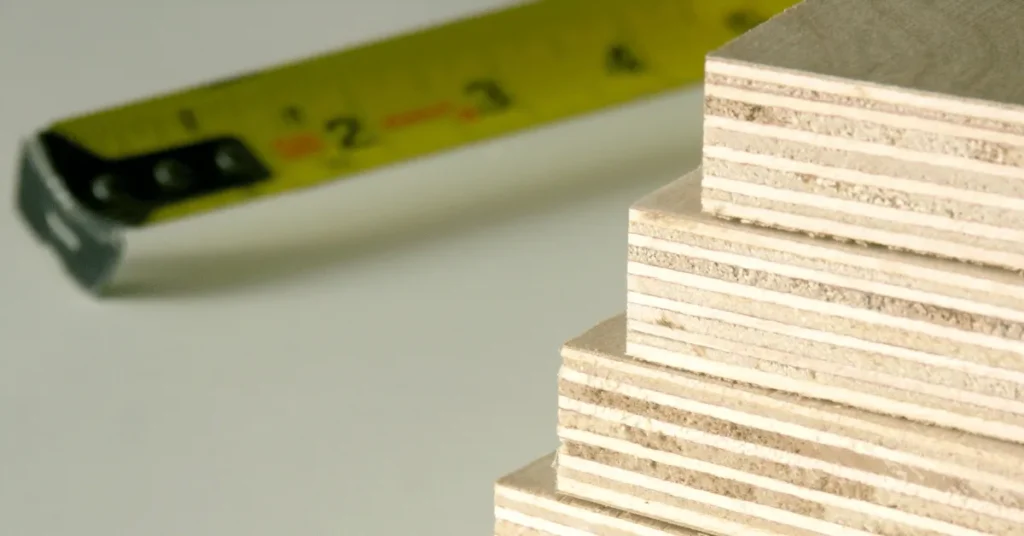
Which alternative is right for you?
The best way to finish your project depends on what you’re making and what you like.
If you want a really smooth surface, sanding is a good choice. If you need a specific edge shape, use a router. And if you just need to get rid of a few minor flaws, a file will do the trick.
Important FAQs
Yes, you can plane plywood, but there are a few things you need to keep in mind. First, plywood is made up of multiple layers of wood veneer that are glued together with a resin.
When you plane plywood, you are essentially shaving off the top layer of veneer. This can be a good way to flatten the surface and remove any imperfections, but it can also damage the veneer and cause it to delaminate.
Here are some of the pros and cons of planing plywood:
Pros:Can flatten the surface and remove imperfections.
Can create a smooth, even finish.
Can be used to reduce the thickness of plywood.
Cons:Can damage the veneer.
Can be time-consuming.
Can be dangerous if not done properly.
There are two main types of planners that can be used for plywood: a hand plane and a power planer. Both types of planners can be effective, but they each have their own advantages and disadvantages.
Hand plane:More precise.
Safer.
Requires more skill.
Power planer:Faster.
More efficient.
Requires less skill.
The best type of planer for you will depend on your specific project and your own personal preferences. If you need a very smooth finish, then a hand plane is a good option. If you need to flatten a large area of plywood quickly, then a power planer is a better option.
Here are some steps on how to reduce the thickness of plywood:
Measure the thickness of the plywood. This will help you determine how much you need to reduce the thickness.
Choose the right tool. You can use a hand plane, a power planer, or a router to reduce the thickness of plywood.
Set the depth of cut. The depth of cut will determine how much plywood is removed with each pass.
Plane the plywood in the direction of the grain.
Check the thickness of the plywood after each pass. This will help you to ensure that you are not removing too much plywood.
Final Thoughts
So, whether you’re a newbie or a pro, I hope this article helped you learn a thing or two about planing plywood.
If you want to learn more, there are tons of resources online and in libraries. And don’t be afraid to experiment with different methods to see what works best for you.
There’s no right or wrong way to do it, as long as you’re comfortable and you get the results you want.
Thank you for reading!
Images by Canva.com
Can You Plane Plywood Edges? (An Ultimate Easy Guide)
“Unlock the Secrets of Perfect Plywood Edges! Discover the Ultimate Easy Guide to Plane Plywood Edges and Elevate Your Woodworking Skills. Whether you’re a beginner or a seasoned pro, this article holds valuable insights that will transform your woodworking projects. Don’t miss out – read now for flawless results!”





